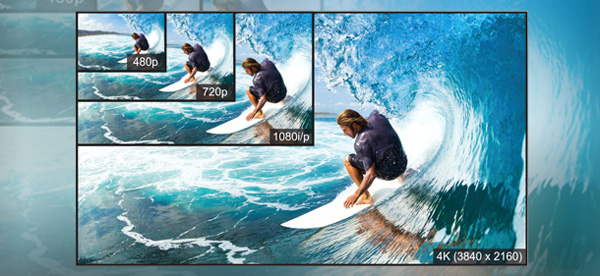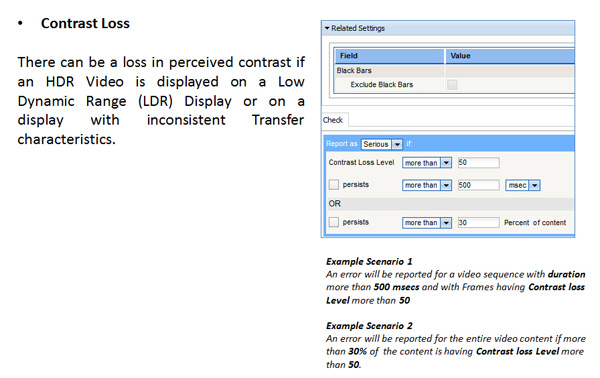Facing the QC Challenge in UHD HDR Video Delivery Workflows

Advait Mogre, Principal Scientist at Interra Systems, is excited about the emergence of high dynamic range (HDR) video processing. “Producers have the opportunity to improve the quality of their content beyond what UHD alone can display, allowing viewers to see more brightness and colour depth than has been possible before,” he said, noting that according to ABI Research, HDR TV shipments will grow steadily over the next few years and surpass 4K TV shipments by 2020.
Revealing a wider colour gamut than SDR, HDR transmission and delivery also have the potential to cause more QC challenges, especially since standards development is still underway and the workflow is still being defined. Advait believes that deploying a reliable quality control system that encompasses a wide range of checks, such as contrast loss and contour banding, is integral to supplying a high quality of experience to viewers. As the number of HDR TV sets increases, viewing quality is becoming more critical to staying competitive, and requires content providers to be better informed.
“For example, for a given throughput, video compression formats like HEVC, with higher coding efficiency, allow providers to deliver content at a more standardised, optimum quality,” he said. “Alternatively, the same content could be supplied at a higher quality using a higher spatial resolution like 4K, a higher video dynamic range, or both. However, higher coding efficiency is often achieved by decreasing coding redundancy, which can cause errors due to packet loss during content transmission or limit the range of screens it can be viewed on.
In this article Advait talks about some of the quality control issues that can occur when delivering UHD HDR content over lossy networks. He also suggests ways that content providers can resolve these errors to better control the quality of their UHD HDR video delivery.
Content and Device Interoperability

One of the primary factors affecting HDR viewing performance is interoperability between the video and the display. When a legacy SDR display is used to view a picture created in a colour palette with a wide colour gamut (WCG), contouring - rendering smooth gradient areas as a series of distinct bands - can be an issue if the conversion is not handled carefully. It may be caused by bit depth loss, a global issue, or to incorrect region-based tone mapping, a local problem.
Loss of contrast may otherwise occur owing to a mismatch between the Electro-Optical Transfer Function (EOTF) - specifying how the system handles different spatial frequencies - of the target panel and actual panel. This may occur, for instance, if WCG footage is viewed on a legacy BT709 compliant display. “Consideration should also be given to the fact that compression artefacts may be more visible in brighter image regions viewed on a bright, high-contrast HDR panel. This situation needs to be monitored and quantified,” said Advait.
Transmission Challenges
“Latency and packet loss are other challenges to look out for in an UHD HDR workflow. When multiple device types are involved, a finite time or delay occurs as a packet travels from one type to another. The cumulative time from the start of information packet delivery to its final arrival at the receiving device is known as the overall latency. Network routers, packet queuing due to heavy network congestion, and satellite communication delays, if applicable, all contribute significantly to latency.”
If a packet is lost, then that particular media packet must be resent, increasing the latency and negatively impacting the actual throughput, as shown in this graph, network throughput versus latency:

If the effective throughput of a lossy channel is lower than the peak specified for the video, the content provider may have to deliver media at a lower bitrate. For native 4K/UHD HDR content, this can result in more compression artefacts, in particular banding or posterization, and a reduction of the colour volume, such as going from BT.2020 to BT.709. Format downconversion, including UHD to HD/SD and/or HDR to SDR, may be necessary in order to reduce bandwidth and avoid packet loss, or lowering the frame rate, which would be extremely noticeable to viewers especially for fast-motion content like sports.
Advait said that all of the issues discussed above can degrade viewers' experience and may become more severe if lost packets can't be retrieved, leading to a loss of information or content. The extent to which QoE is impacted in these circumstances depends on the visual complexity of the content, and on the receiver's error concealment, a signal processing technique that aims to minimise the deterioration of signals caused by packet loss.
Implementing QC Checks for UHD HDR Content
To control the quality of UHD HDR content delivered over lossy networks, content providers need a QC system that is reliable, flexible and efficient. Advait said, “A file-based QC system that is automated will help speed up the workflow, and a scalable architecture will allow providers to expand as their demand for QC grows. In terms of reliability, high availability makes sure that the system continues even if one of the components is down.
“Comprehensive HDR checks include frame-maximum light level, frame-average light level, light level over the entire content, local and global contouring, contrast loss due to panel mismatch, and customised checks for compression artefacts. These checks should incorporate all the existing HDR standards like Dolby PQ, HDR10, HDR10+, HLG and so on. Beyond this, QC processes need to be user-friendly so that providers can detect and alleviate issues quickly.” The following shows a snapshot of an intuitively designed GUI for checking HDR-related contrast loss.

Advait is confident that HDR checks will continue evolving as more clarity is achieved over time on standardisation and, from there, interoperability within the HDR ecosystem. A flexible approach to quality assurance will allow content providers to keep pace with these changes, and by adding complementary processing to the ecosystem, such as audio/video analysers and real-time content monitoring, they can further guarantee the quality of UHD HDR content. www.interrasystems.com




